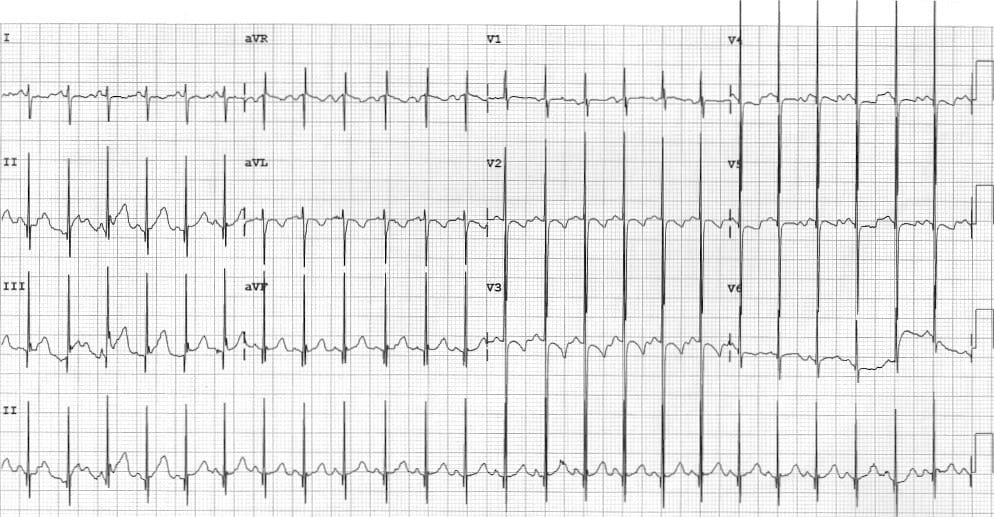Ventricular Septal Defect
If the ventricular septal defect (VSD) is small, it does not cause any notable changes to the patient’s ECG. On the other hand, a large VSD may cause significant left to right shunting and overload of both the left and right ventricles. Left axis deviation may be evident. The R + S value in lead V2 or V3 may be greater than or equal to 4 mV—this is known as the “Katz-Wachtel sign.” ECG findings of left atrial enlargement can also be seen in these patients.

Katz-Watchel Phenomenon 62
The ECG above has tall biphasic QRS complexes with > 50 mm amplitude in precordial leads V2, V3, and V4, characteristics associated with biventricular hypertrophy that can result from a severe VSD.
62 Cadogan M. Katz-Wachtel phenomenon. Life in the fastlane website. Accessed September 24, 2020.
https://litfl.com/wp-content/uploads/2018/08/ECg-Biventricular-hypertrophy-in-a-child-with-VSD.jpg